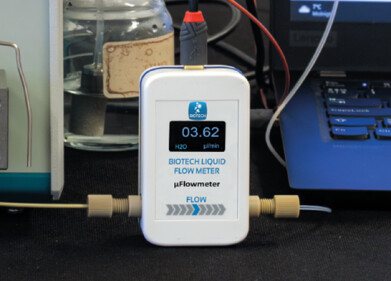HPLC, UHPLC
Should We Drink More Husk Tomato Juice? - Chromatography Explores
Mar 25 2019
Sales of natural drinks and beverages have increased over the last few years as consumers become more aware of what they eat and drink. Natural fruit juice-based drinks are one of the beverages to see increased consumption as we switch away from traditional sodas. There are many reasons for the switch, including nutritional benefits and a reduced calorific intake compared to traditional drinks.
Fruit flavoured yogurt drinks are seen as one of the drinks having enhanced nutritional qualities. Phenolic compounds, found in prebiotic yogurts, have also had a good press as they bring several properties to the health market that are seen as beneficial. Antioxidant, antimutagenic and anti-inflammatory are just some of the properties that phenolic compounds bring. They are also reported as bringing a reduced risk towards some diseases including cardiovascular diseases and cancer development.
Husk Tomato flavoured yogurt - the future?
One fruit that is currently under the radar in traditional Western markets but is appreciated in other areas of the world is the husk tomato. Husk tomato (Physalis peruviana) is a fruit that is also known as golden berry or Cape gooseberry. A recent study in Egypt has looked at the properties of the husk tomato as a natural fruit juice and also assessed its nutritional properties as an additive to prebiotic yogurt.
Physalis peruviana is used in many different folk remedies for the treatment of malaria, dermatitis and rheumatism having anti-bacterial, diuretic and anti-pyretic properties. It is also rich in vitamins and minerals particularly phosphorus and iron. Furthermore, it has a high fibre content. Adding the fruit to yogurts containing lactic acid bacteria could produce a drink containing many health benefits report the scientists behind the work.
Chromatography assesses the benefits
The team in Egypt used high performance liquid chromatography to analyse the components of husk tomato juice. HPLC is one of the main analytical techniques used in food sciences. Methods are constantly being developed to analyse food. Method development is the subject of the article, The Role of Methanol and Acetonitrile as Organic Modifiers in Reversed-phase Liquid Chromatography.
The team found various phenolic and antioxidant components in the husk tomato juice. Flavonols such as Sinapic acid, Protocatechuic acid, Cinnamic acid and Ferulic acid were all found in husk tomato juice - compounds with known health benefits. When the team mixed the husk tomato juice with stirred prebiotic yogurts and analysed the antioxidant activity after 5, 10 and 15 days - the samples containing husk tomato juice all had a higher antioxidant activity rating.
Husk tomato juice - part of your five-a-day?
Digital Edition
Chromatography Today - Buyers' Guide 2022
October 2023
In This Edition Modern & Practical Applications - Accelerating ADC Development with Mass Spectrometry - Implementing High-Resolution Ion Mobility into Peptide Mapping Workflows Chromatogr...
View all digital editions
Events
ACS National Meeting - Fall 2024
Aug 18 2024 Denver, CO, USA
Sep 04 2024 Chiba, Tokyo, Japan
Sep 04 2024 University of Warwick, Coventry, UK
Sep 10 2024 Rockville, MD, USA
Plastics Recycling World Expo Europe
Sep 11 2024 Brussels, Belgium














